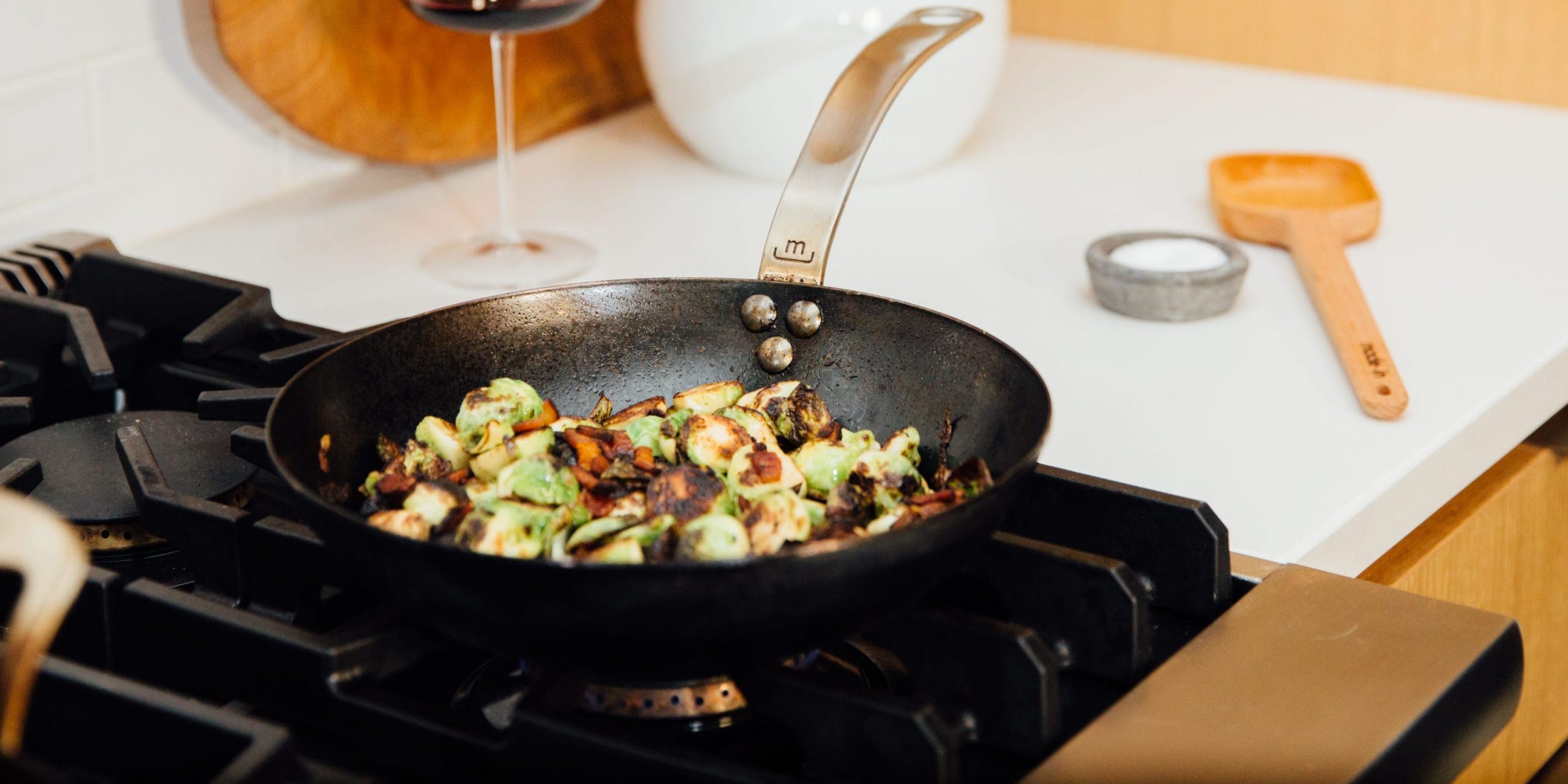
Made In
- A hybrid between cast iron and stainless steel, carbon steel pans are favored by professional chefs.
- Carbon steel is lightweight, nonstick, oven safe at high temperatures, and cost less than $100.
- Like cast iron, carbon steel pans require diligent cleaning and maintenance.
- Visit Insider’s homepage for more stories.
There are many types of cookware materials out there, but a few stand out more than others: Cast iron, copper, enamel, stainless steel – and carbon steel. While cast iron has been a kitchen staple for decades, carbon steel is a restaurant-world favorite that’s worth considering for your home, too.
What is carbon steel?
Carbon steel is a special alloy – a combination of two or more metals – that has a higher concentration of carbon than other forms. Because it has a larger proportion of its namesake metals, carbon steel has high thermal conductivity that makes heating relatively fast. In short, it’s a hybrid of stainless steel and cast iron that’s used in all forms of cookware including knives, woks, paella pans, and more.
Carbon steel versus cast iron
When it comes to cookware, carbon steel is lighter and slicker than cast iron, while boasting similar durability and versatility. Because carbon steel pans are usually stamped or spun from sheets of metal, they have a smoother, more nonstick surface than crumbly cast iron. They generally have sloped sides, making carbon steel pans much better for sautéing than cast-iron skillets.
“Adding carbon steel to your kitchen arsenal seems like a no-brainer: It’s lightweight, so you don’t have to worry about wrist fatigue when you’re trying to saute. It heats up fast and can withstand temps of 600 degrees and above, so it can give your steak a killer sear and go from your stove to your oven without a second thought,” says chef and Food Network judge Monti Carlo.
Carbon steel pans are a common sight in restaurant kitchens and a favorite with culinary pros, but there are many qualities that may make it the cookware material of choice for home cooks, too.
1. It's super versatile
Carbon steel retains heat very well compared to the typical skillet (though not quite as well as cast iron) and is extremely durable, able to go straight from the stovetop to the oven.
"It's great for getting a hard sear on meats and fish. You can also cook desserts and cornbread in carbon steel and it gives them a really nice firm crust. I've even taken a carbon steel pan camping and cooked with it directly in the fire," says Chris Scott, chef at the Institute of Culinary Education.
You can use it on just about any cooktop, including induction, grills, and even on the aforementioned campfire.
2. It heats up quickly
Carbon steel gets hot faster - in three to five minutes - than cast iron, which requires preheating to avoid spotty cooking. That can take anywhere between 10 to 30 minutes, especially if you plan on doing any kind of searing.
3. It's nonstick
Relative to other cookware - including cast iron, which has a grainier surface - carbon steel has an impressive nonstick surface when seasoned properly. Seasoning refers to the accumulation of oil that has baked into a pot or pan's surface. It forms a natural, easy-release cooking surface and helps prevent your pan from rusting.
There is a caveat to keep in mind before you buy: "Carbon steel is touted as nonstick, but to achieve that, you need to season the pan and continue seasoning it throughout its lifetime. Acidic foods like tomato sauce, vinegar, and lemon juice can strip the seasoning, so if your recipe box is chock full of recipes that lean acidic, skip it," says Carlo.
4. It's significantly lighter
Carbon steel is thinner and lighter, with a weight closer to stainless steel, than its clunkier cast-iron cousins, which are normally the heaviest item in a kitchen. According to cookware brand Lodge, a typical 10-inch skillet weighs anywhere from five to six pounds, while a carbon steel pan of the same size would be between three and four pounds.
5. It doesn't scratch
Most nonstick pans require diligence when it comes to cooking tools. Metal utensils can scrape off the coating and damage the pan - or worse, get in your food. Once a carbon steel pan has been seasoned, it will give you a nonstick surface that stands up to metal cooking tools, so you won't have to worry about scratches. With proper maintenance, a good carbon steel pan can last you decades.
6. It won't break the bank
One of the biggest selling points when it comes to carbon steel is the price point. You can score a great, lifetime-lasting carbon steel pan for under $50. Cast iron and carbon steel are similar in price, but carbon steel is significantly cheaper than stainless steel pans.
Insider's takeaway
If you're looking for a more lightweight and nonstick alternative to cast iron, a carbon steel pan is an affordable and versatile option that's recommended by professional chefs.